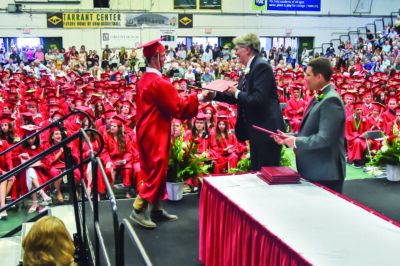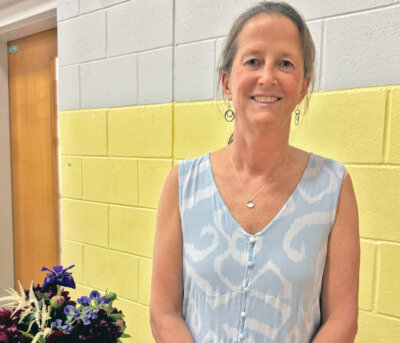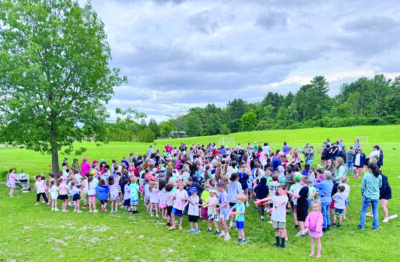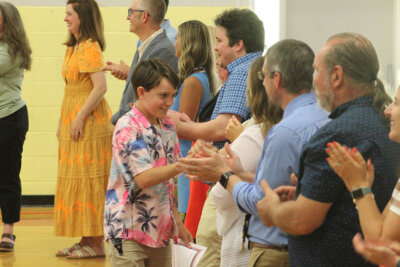District announces school reopening details
 Superintendent Elaine Pinckney opened the Champlain Valley School District Board meeting on Tuesday, July 21 with the statement, “We are working from imperfect options and choosing the best of those options. We are focusing on two things: the safety of our children and the fact that they need to be in school.” The plans described here have been developed by the administrations of the regional school districts including those in Chittenden County, parts of Addison County, and Franklin and Grand Isle Counties. CVSD schools will open as a hybrid model: in school two days per week, home study for two days, and remote classes on Wednesdays.
Superintendent Elaine Pinckney opened the Champlain Valley School District Board meeting on Tuesday, July 21 with the statement, “We are working from imperfect options and choosing the best of those options. We are focusing on two things: the safety of our children and the fact that they need to be in school.” The plans described here have been developed by the administrations of the regional school districts including those in Chittenden County, parts of Addison County, and Franklin and Grand Isle Counties. CVSD schools will open as a hybrid model: in school two days per week, home study for two days, and remote classes on Wednesdays.
The CVSD administration has been working since March to figure out how to open schools safely. One factor has arisen as the key roadblock to having a full-time school program, and that is the need to separate students by a distance of six feet. The findings that the disease can be spread through airborne particles means that the six feet distance is critical. No matter what configuration was imagined, there was no way that the administration could create the safe distance required with a full student population. The model chosen will be in alignment with Phase 2 of the Vermont Department of Health guideline. This model means that there will be fewer students in classrooms and more room for the 6-feet requirement.
CVSD Superintendent Elaine Pinckney wrote in an email to families on Wednesday that though details, particularly for grades K-8, are still in development, the general plan is that students will be in school twice a week and teachers will be there full-time.
Schools, she said, “will be reopening in a hybrid model. This means that students will be in school in person for two days per week and will access instruction remotely on the remaining days…We are also working to develop a fully remote model, a centralized option for families to select, that would provide a rigorous opportunity for students to access their education from home without accessing our school buildings. We believe our remote model will be far superior to the traditional homeschool option offered through the Agency of Education and are hopeful that our families will choose this option if their students are not able to participate in our hybrid model.”
To illustrate how this system will work, the Champlain Valley Union High School schedule and model was explained in detail by Adam Bunting. Students will be in school either Mondays and Thursdays or Tuesdays and Fridays. Wednesdays will be a remote learning day. Instead of 7 or 8 courses, students will take four courses a semester and will be doing work every day on those four courses.
In-school classes will be small, entrance and exits will be assigned, and hall passings will be regulated. Although all of the details of remote learning have not been worked out, at least some of the Wednesday remote learning classes will be taught in real time with teachers who are part of the students’ program on the in-school days. Breakfast and lunch will be in the cafeteria, but students will be six feet apart. Advisory sessions will take place during lunch. Clubs and intervention sessions will take place at the end of the day and there may be early and later buses. It appears that most sports will take place as usual.
The matter of personal protective equipment was not addressed in detail but all students and teachers will wear masks or head coverings and hand washing will be frequent. Classrooms will be cleaned after each session.
Members of the Board and public participants had many questions. Among them was the question of how students will be grouped, since the group will be the main social contacts for students for the year until a vaccine is produced. Grouping methods have not been decided upon. Another question had to do with the possible occurrence of a positive case. Elaine Pinckney stated that all of the guidelines and practices around the virus will be directed by the Department of Health. One positive case will not shut down an entire school. The new system of student grouping and contacts means that all student school contacts will be known and can be available immediately for contact tracing by the Public Health Department. Consideration for closing schools may be precipitated by a wide community outbreak, not usually by one case.
There are several aspects of this plan that have yet to be worked out, but the main points of the presentation were these: 1) the safety of students is the primary driver of the plan; 2) the curriculum will be rigorous and the remote learning will be enhanced over the program that was delivered in the midst of the outbreak as spring; 3) the social/emotional needs of the students will be addressed; 4) the needs of families navigating this interrupted program will drive the scheduling.
Some students with special needs may have to be in the building for more time than others. Elaine Pinckney stressed that if families are reticent about sending students to school, they can choose an all-remote program. In any case, the curriculum delivered by CVU will be more rigorous and provide more opportunities than a homeschooling program. Adam Bunting said, “I hope people will understand the fluidity of the situation. Everything is new.”
Three days of school at the beginning of the year will be devoted to professional development focused on enhancing remote instruction. Those student instruction days will be added on at the end of the year. Transportation by bus will continue and students will be seated well apart from one another, wearing masks. Parents may choose to drive their children to school.
The design for the K-8 students in the district will be announced on August 4. A website containing information on CVSD school openings will be up on Friday, July 24. Information on the elementary and middle schools will be posted there on August 4. In addition, newsletters describing these new systems and preparations will be sent regularly to parents during the summer.
Related Stories
Popular Stories
If you enjoy The Charlotte News, please consider making a donation. Your gift will help us produce more stories like this. The majority of our budget comes from charitable contributions. Your gift helps sustain The Charlotte News, keeping it a free service for everyone in town. Thank you.
Andrew Zehner, Board Chair








